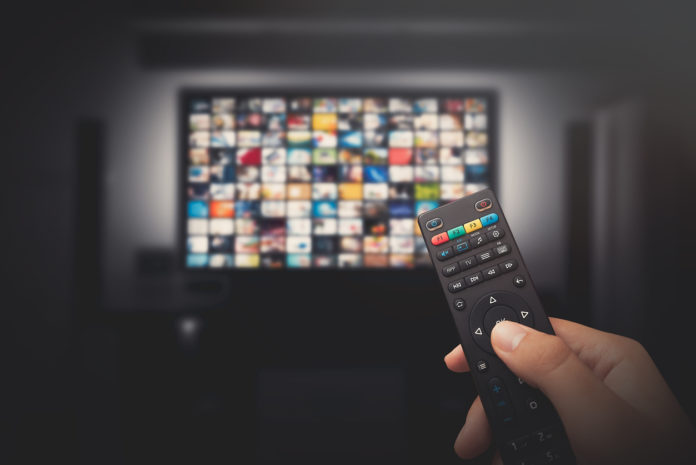Wouldn’t you like to tap the market with over 110 million monthly users? That’s how many active devices per month Android TV and Google TV have as of January 2022, which is up 30 mln since 2021.
The Android ecosystem is clearly pretty strong and continues to grow. Today, 6 out of 10 Smart TV manufacturers, including Sony, TCL, Philips, and Hisense, work with Google to use Android TV OS in their products. Google is also actively pushing the platform to vendors — the company has announced partnerships with 160+ TV operators, with AT&T being the latest addition.
While this millions-strong audience is always asking for more new shows, movies, and games, Android TV app development has become a hot topic right now. But as businesses start to recognize the benefits of rolling out their Android TV app to win more viewers, the competition is also getting tougher. Google Play now offers over 5,000 Android TV apps and games to choose from. The reasonable question here is how to make sure your TV app gets its fair share of attention?
It goes without saying that nothing beats high-quality content in driving user engagement. However, what’s the point of curating stellar content if your app is not adapted to the leanback experience or users simply can’t find it? We have collected best UX practices to help you make your smart TV app stand out.
Design for the 10-foot user experience
The smart TV experience is often called a “10-foot experience” because a typical user views TV from ten feet away. The distance to the TV, the screen size, as well the fact that a TV set is almost always in the center of the living room with changing lighting conditions during the day — a lot of factors must be taken into consideration when designing a smart TV interface.
First of all, to be published on Google Play, your app must comply with the official Android TV design guidelines that stipulate simple navigation and easy setup. Other best practices include:
- Information density on a smart TV must be lower than on a tablet;
- Every component must be reachable through a D-pad;
- Color palette must work with different lighting conditions;
- Add a 5% margin to a layout to ensure that all screen elements are within the overscan safe area;
- Launcher app banner should be a 320×180-pixel icon.
Customize the Leanback library
The Leanback library is a collection of UI templates and high-level widgets. By using the Leanback library, developers can easily implement a smart TV interface that conforms to Google’s Material Design Guidelines.
Source: Github
To ensure a native look and feel for your Android TV app, you can customize the Leanback library. One way to do this is by changing colors, dimensions, and properties like padding, row style, title styles, and more. You can also implement custom presenters to gain even better control over the look of your widgets. The Leanback library is built on the model-view-presenter design pattern, and the presenter class allows developers to customize the UI without changing the underlying data structure.
Make your content searchable
Last year, Android TV got a major UI overhaul. The new Google TV-inspired interface with three tabs and a recommendation section is focused on helping users easily discover the content they might like.
Source: Android Police
The Android TV home screen displays recommended content through channels and programs. In order to be featured on the home screen, you need to create at least one channel for your app. If you are building a video streaming solution, you can also create preview videos to delight your viewers and drive engagement.
To help users discover your content more easily, integrate your app with the Play Next section that is a system-managed channel shared by all apps. This channel appears on the home screen before any app’s channel and shows the most relevant and popular content and apps.
Integrate with Google Assistant
In 2017, Google brought its Alexa and Siri rival, Google Assistant, to Android TV. This opened new — and more engaging — ways for users to discover, launch, and control media content on their TV sets.
Making your content available to users through Google Assistant boosts engagement and streamlines the entire smart TV experience. There are different ways to integrate Google Assistant into your app. With a server-side integration, you provide your content catalog to Google to make your data available to Google Assistant outside your app. Or you can choose a client-side integration if your app is already searchable.
The bottom line
Driven by the surge in use of streaming devices and shifting consumer preferences, the global smart TV market is steadily growing and is expected to reach 266 million units by 2025. Although Samsung’s Tizen is the leading platform for smart TVs, Google’s Android TV showed the largest growth in 2021 and the trend is expected to continue this year, too. In the US alone, Android TV has grown 80% over the recent years.
If anything, these numbers suggest that developing an Android TV app is a sure-fire way to bring your content to a continuously growing global audience. Whether you choose to engage your in-house team or partner with a software development company, remember that a highly-engaging Android TV app is first of all about getting the basics right — clean, uncluttered UI, low content density, streamlined navigation. And finally, integrating with Google Assistant or Android TV-specific functions like Play Next channel will take your app to the next level.





